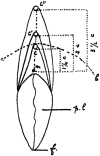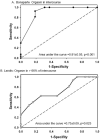Female sexual arousal: genital anatomy and orgasm in intercourse - PubMed (original) (raw)
Female sexual arousal: genital anatomy and orgasm in intercourse
Kim Wallen et al. Horm Behav. 2011 May.
Abstract
In men and women sexual arousal culminates in orgasm, with female orgasm solely from sexual intercourse often regarded as a unique feature of human sexuality. However, orgasm from sexual intercourse occurs more reliably in men than in women, likely reflecting the different types of physical stimulation men and women require for orgasm. In men, orgasms are under strong selective pressure as orgasms are coupled with ejaculation and thus contribute to male reproductive success. By contrast, women's orgasms in intercourse are highly variable and are under little selective pressure as they are not a reproductive necessity. The proximal mechanisms producing variability in women's orgasms are little understood. In 1924 Marie Bonaparte proposed that a shorter distance between a woman's clitoris and her urethral meatus (CUMD) increased her likelihood of experiencing orgasm in intercourse. She based this on her published data that were never statistically analyzed. In 1940 Landis and colleagues published similar data suggesting the same relationship, but these data too were never fully analyzed. We analyzed raw data from these two studies and found that both demonstrate a strong inverse relationship between CUMD and orgasm during intercourse. Unresolved is whether this increased likelihood of orgasm with shorter CUMD reflects increased penile-clitoral contact during sexual intercourse or increased penile stimulation of internal aspects of the clitoris. CUMD likely reflects prenatal androgen exposure, with higher androgen levels producing larger distances. Thus these results suggest that women exposed to lower levels of prenatal androgens are more likely to experience orgasm during sexual intercourse.
Copyright © 2011. Published by Elsevier Inc.
Figures
Figure 1
Illustrates the sex difference in the occurrence of orgasm in males and females in relation to age. Males show a rapid transition from few boys experiencing orgasm prior to puberty to all men experiencing orgasm soon after puberty. Women, by contrast show a much more gradual developmental curve. Male data are adapted from Kinsey, Pomeroy, and Martin, 1948 and the female data are adapted from Kinsey, et al., 1953.
Figure 2
Illustrates the measurements used to determine the clitoral-urinary meatus distance (CUMD) in a sample of adult women. C, C′, and C″ are the location of the clitoris, M is the location of the urinary meatus, p.l. are the labia minora (petites lèvres in french), F is the fourchette of the vagina, and a,b is the arch of the symphysis pubis. Bonaparte's CUMD measure was from the frenulum of the clitoris (underside of the clitoral glans) to the center of the urinary meatus (Adapted from Narjani, 1924).
Figure 3
The distribution of CUMD measures in the Bonaparte (Narjani, 1924) and Landis (Landis, Landis, and Bowles, 1940) samples. The Bonaparte sample (N=43) had significantly shorter CUMDs than did the Landis sample (N=35) possibly reflecting a difference in the clitoral measuring point used in the two studies.
Figure 4
Average CUMD measurements in the Bonaparte and Landis samples for those women routinely experiencing orgasm in intercourse (orgasm 66% of the time or more) and those not, or experiencing orgasm in intercourse less than 67% of the time (Landis sample). Data are shown for the samples combined and for the CUMD measurements of women in the Bonaparte sample experiencing autosexual orgasms. For the Bonaparte, Landis and Combined samples the differences are statistically significant, although the magnitude of the difference is substantially greater in the Bonaparte than the Landis sample. The difference in CUMD for the autosexual sample is not statistically significant.
Figure 5
Receiver Operating Characteristic curves (ROC) for the relationship between CUMD and orgasm in intercourse for the Bonaparte (5a) and Landis samples (5b). Although both ROCs accounted for significant area under the curve, the Bonaparte sample accounted for more area than did the Landis sample and showed greater sensitivity and specificity. The dashed diagonal like represents 0.5 area under the curve, which would reflect a chance relationship between CUMD and orgasm in intercourse.
Similar articles
- Clitorally Stimulated Orgasms Are Associated With Better Control of Sexual Desire, and Not Associated With Depression or Anxiety, Compared With Vaginally Stimulated Orgasms.
Prause N, Kuang L, Lee P, Miller G. Prause N, et al. J Sex Med. 2016 Nov;13(11):1676-1685. doi: 10.1016/j.jsxm.2016.08.014. Epub 2016 Sep 22. J Sex Med. 2016. PMID: 27667356 - Women's Experience of Orgasm During Intercourse: Question Semantics Affect Women's Reports and Men's Estimates of Orgasm Occurrence.
Shirazi T, Renfro KJ, Lloyd E, Wallen K. Shirazi T, et al. Arch Sex Behav. 2018 Apr;47(3):605-613. doi: 10.1007/s10508-017-1102-6. Epub 2017 Oct 27. Arch Sex Behav. 2018. PMID: 29079939 - Body Movement Is Associated With Orgasm During Vaginal Intercourse in Women.
Bischof-Campbell A, Hilpert P, Burri A, Bischof K. Bischof-Campbell A, et al. J Sex Res. 2019 Mar-Apr;56(3):356-366. doi: 10.1080/00224499.2018.1531367. Epub 2018 Oct 25. J Sex Res. 2019. PMID: 30358427 - Anatomy of sex: Revision of the new anatomical terms used for the clitoris and the female orgasm by sexologists.
Puppo V, Puppo G. Puppo V, et al. Clin Anat. 2015 Apr;28(3):293-304. doi: 10.1002/ca.22471. Epub 2014 Oct 6. Clin Anat. 2015. PMID: 25283533 Review. - The complexity of female orgasm and ejaculation.
Arias-Castillo L, García L, García-Perdomo HA. Arias-Castillo L, et al. Arch Gynecol Obstet. 2023 Aug;308(2):427-434. doi: 10.1007/s00404-022-06810-y. Epub 2022 Oct 8. Arch Gynecol Obstet. 2023. PMID: 36208324 Review.
Cited by
- A new look at the theoretical causes of endometriosis: Narrative review.
Awad Hegazy A. Awad Hegazy A. Int J Reprod Biomed. 2024 Jul 8;22(5):343-356. doi: 10.18502/ijrm.v22i5.16433. eCollection 2024 May. Int J Reprod Biomed. 2024. PMID: 39091427 Free PMC article. Review. - 3D quantitative analysis of normal clitoral anatomy in nulliparous women by MRI.
Bowen ST, Dutta A, Rytel K, Abramowitch SD, Rogers RG, Moalli PA. Bowen ST, et al. Int Urogynecol J. 2022 Jun;33(6):1649-1657. doi: 10.1007/s00192-022-05172-y. Epub 2022 Apr 8. Int Urogynecol J. 2022. PMID: 35394140 - Clustering of PCOS-like traits in naturally hyperandrogenic female rhesus monkeys.
Abbott DH, Rayome BH, Dumesic DA, Lewis KC, Edwards AK, Wallen K, Wilson ME, Appt SE, Levine JE. Abbott DH, et al. Hum Reprod. 2017 Apr 1;32(4):923-936. doi: 10.1093/humrep/dex036. Hum Reprod. 2017. PMID: 28333238 Free PMC article. - Measuring sperm backflow following female orgasm: a new method.
King R, Dempsey M, Valentine KA. King R, et al. Socioaffect Neurosci Psychol. 2016 Oct 25;6:31927. doi: 10.3402/snp.v6.31927. eCollection 2016. Socioaffect Neurosci Psychol. 2016. PMID: 27799082 Free PMC article. - Climax as Work: Heteronormativity, Gender Labor, and the Gender Gap in Orgasms.
Andrejek N, Fetner T, Heath M. Andrejek N, et al. Gend Soc. 2022 Apr;36(2):189-213. doi: 10.1177/08912432211073062. Epub 2022 Jan 31. Gend Soc. 2022. PMID: 35185280 Free PMC article.
References
- Alzate H. Vaginal eroticism: a replication study. Arch Sex Behav. 1985;14:529–37. - PubMed
- Bonaparte M. Les deux frigidités de la femme. Bulletin de la Société de Sexologie. 1933;5:161–170.
- Brody S, Costa RM. Vaginal orgasm is associated with less use of immature psychological defense mechanisms. J Sex Med. 2008;5:1167–76. - PubMed
- Buisson O, Foldes P, Jannini E, Mimoun S. Coitus as Revealed by Ultrasound in One Volunteer Couple. J Sex Med. 2010 epub ahead of print. - PubMed
- Buisson O, Foldes P, Paniel BJ. Sonography of the clitoris. J Sex Med. 2008;5:413–7. - PubMed
Publication types
MeSH terms
LinkOut - more resources
Full Text Sources




